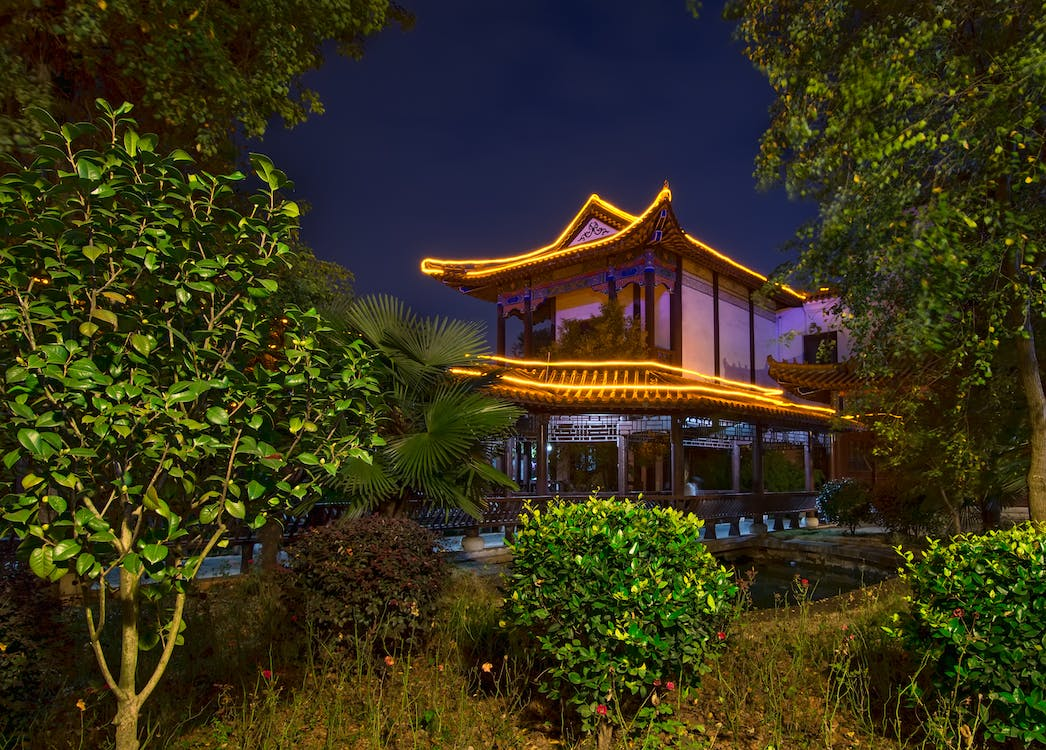
Photo by James Wheeler from Pexels
https://www.pexels.com/photo/brown-and-beige-house-1552208/
Roofline lighting is a popular choice among homeowners looking to accentuate the architectural features of their homes, create an inviting atmosphere, or enhance security. Despite its growing popularity, it's essential to understand the pros and cons of this lighting option before making a decision. Here's a comprehensive guide on everything you need to know about it.
It refers to the strategic placement of lights along the edges of your home's roof. These lights can be installed along the eaves, highlighting the lines and angles of your house, thereby adding depth and dimension at night. It comes in various forms, including string lights, spotlights, and LED strips, each offering a unique aesthetic appeal.
While this form of lighting was initially popular during the festive season, it has now become a year-round trend. Homeowners appreciate the added beauty it brings to their homes and the practical benefits it offers like improved safety and visibility.
One of the significant advantages is its ability to enhance the curb appeal of your home. It emphasizes the architectural details of your house, making it stand out, especially at night. Plus, it creates an inviting ambiance, which can be particularly beneficial if you frequently host evening events at your home.
Moreover, it can contribute significantly to the safety and security of your home. By illuminating dark corners and edges, it reduces potential hiding spots for intruders, acting as a deterrent. It also improves visibility for homeowners and guests when navigating the property after dark.
Despite its benefits, it also has its drawbacks. Installation can be challenging, especially for homes with high or complex rooflines. It often requires professional help, which can add to the overall cost. Additionally, depending on the type of lights used, the energy consumption could potentially increase your utility bills.
Another concern is maintenance. Lights installed along the roofline are exposed to the elements, meaning they may require more frequent repairs or replacements than indoor lighting. This exposure can lead to wear and tear, especially in harsh weather conditions, resulting in additional maintenance costs.

Photo by cottonbro studio from Pexels
https://www.pexels.com/photo/lighted-string-lights-during-night-time-4881659/
Choosing the right lights for your roofline depends on your aesthetic preferences, budget, and the specific features of your home you wish to highlight. LED lights are a popular choice due to their energy efficiency, longevity, and variety of color options. However, they can be more expensive upfront than other options.
Solar-powered lights are another excellent option for the environmentally conscious homeowner. They harness energy from the sun, reducing reliance on electricity and potentially saving money in the long run. However, they may not be as bright or reliable as wired options, especially in areas with limited sunlight.
Proper installation is crucial to maximize the benefits of roofline lighting. It's essential to consider factors like spacing, light direction, and control options. Spacing should be even to ensure uniform illumination. The direction of the lights should aim to highlight architectural features without causing light pollution.
You might also want to consider control options such as timers or motion sensors to enhance convenience and energy efficiency. While DIY installation is possible, hiring a lighting professional such as Blingle in Chesterfield is advisable for optimal results and safety, especially for complex rooflines.
Regular maintenance can extend the lifespan of your roofline lights and keep them looking their best. This includes cleaning the lights regularly to remove dirt and debris that can dull their brightness. Also, promptly replace any burnt-out bulbs to maintain consistent lighting.
During severe weather conditions, consider removing or covering the lights to protect them from damage. Regular inspections by a professional can also help detect and address any potential issues early, preventing costly repairs or replacements in the future.
In conclusion, it can be a valuable addition to your home, offering both aesthetic and practical benefits. However, it's important to consider the potential drawbacks, including installation challenges, energy consumption, and maintenance needs.
Choosing the right type of light and ensuring proper installation can maximize the benefits and minimize potential drawbacks. Regular maintenance can also help ensure your roofline lights remain a stunning and functional feature of your home for years to come.
Whether it is worth it ultimately depends on your individual preferences and circumstances. If you value enhanced curb appeal, improved safety, and the ability to showcase your home's architectural features, then roofline lighting may be a worthwhile investment for your home.